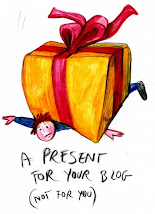The Reef HQ Aquarium, Townsville is only a few minutes walk from the heart of the city. Reef HQ, in Townsville, is the world’s largest living coral reef aquarium and home to 130 species of coral, 120 species of fish and many hundred sea stars, sea urchins, sea cucumbers, worm sponges and countless other coral reef creatures.
Reef HQ is the only living coral reef aquarium in Australia and one of the primary tools for educating the public about the management of the Great Barrier Reef.
Reef HQ is the only living coral reef aquarium in Australia and one of the primary tools for educating the public about the management of the Great Barrier Reef.
 The coral reef tank is a closed ecosystem that closely replicates a natural coral reef with sunlight, waves, water movement and the same biodiversity found in the Great Barrier Reef Marine Park.
The coral reef tank is a closed ecosystem that closely replicates a natural coral reef with sunlight, waves, water movement and the same biodiversity found in the Great Barrier Reef Marine Park.It is an amazing experience to stand centimeters away from reef sharks whizzing past my nose, look into the mouth of a stingray, or the eyes of a turtle, as I wander through the 20metre long acrylic walk-through tunnel that acts as a window to the reef.




Townsville is well known for its combination of tropical warmth and magnetism of city. The city enjoys 320 days of sunshine and therefore the Reef HQ Aquarium, Townsville is one which combines a balanced source of flora and fauna. Around 50 swimming pools will get into The Reef HQ Aquarium.



Corals are very susceptible to changes in weather.The temperature changes are felt naturally. The living beings experience the fell of rain, thunder storms and everything. As the corals are very sensitive, the water in the reef is maintained regularly. The water is extremely fresh and clear. It is also the place for predators, turtles and various other kinds of fishes.
The Reef HQ Aquarium, Townsville is very technically built which helps in the survival of all kinds of animals and plants. It could be called a manmade ecosystem. A healthy growth of algae and greenery helps the animals and fishes to feed on them. There are a lot of fishes who feed on the invertebrates and worms which are there in the underground sand.
A large number of students and teachers visit the Reef HQ Aquarium which helps in live demonstration and educational knowledge for the students. Students, visitors and tourists get a healthy environmental knowledge from the Reef HQ Aquarium, Townsville.
Reef HQ is one of my favourite place in Townsville and I enjoy to watch the fish, turtle and the corals.






























